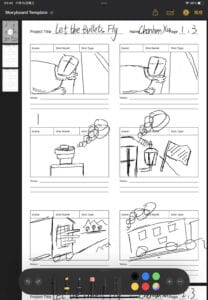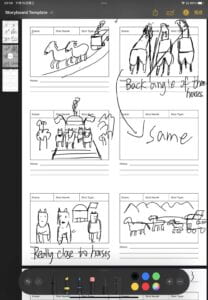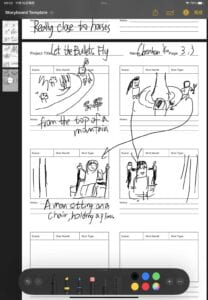Memory Soundscape Documentation
For this blog I’m going to document in detail how I made this sound memory, here’s a screenshot of my work and the artwork.
First of all, in my first draft, I already had a rough synopsis of the story: a middle-aged man runs away due to the stress of life, seeking a kind of spiritual relaxation and relief.
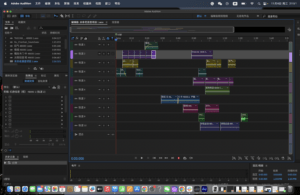
I began by first putting footsteps, a zipper sound, and a door opening, foreshadowing the middle-aged man leaving his home. Then I recorded the sound of a vending machine, and the sound of matches, symbolizing the man buying a cigarette to smoke. Then I added the sounds of a bicycle, luggage, and a speeding car at the end to emphasize the middle-aged man’s walk outside.
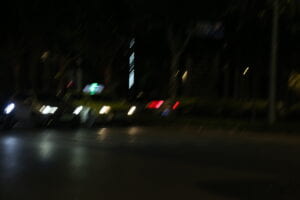
I then gave it to my friend to listen to, and I discussed it with him, and he gave some of his suggestions:
1. In order to be able to illustrate that the man is already outside at the beginning, there needs to be some obvious sound contrasts, such as wind, murmurs etc. Therefore, I followed the sound of the wind with some miscellaneous sounds immediately after lighting the cigarette to show that he was already in the outside world, and to show that the conditions outside were actually very cold.
2. After lighting the cigarette, the professor suggested that I show the character’s heartfelt emotions at that time through some sighing sounds, so I followed it with two more obvious sighs.
3. Before going out of the door, in order to make the story more natural, I made up for it by zipping up my zipper after In order to make the story more natural, I added the sound of organizing clothes after zipping up the zipper, to portray the man’s image of being neat and tidy even though he is under great pressure.
4. Also to portray the man’s great pressure, I added a lot of message reminders in the middle of the bike and the luggage, as well as the sound of the man typing back the message, to reflect that he is actually busy at work and under great pressure, and that it is now the rare time that he has to himself, and so he deleted the reply and turned off his phone.
5. Regarding the ending, I’ve been thinking about how to make the ending flow better because it’s based on a story I remember, a traffic accident where the man was hit by a car because he wasn’t paying attention, so I wanted to end my story with a car crash. But I didn’t want the process to be too cumbersome, so I only planned to use the sound of brakes to represent the impact of the car.6. Regarding the production of the brake sound, the original sound was rather short and not layered, so I used the Doppler Effect Enhancer through my study, and I set up the parameters to simulate the impact of the car’s action on the sound, so as to make the sound more realistic.
Of course, I have a lot of questions. As the professor commented to me, as a sound project rather than a movie project, the sound is more abstract. We need to use sound to make the audience imagine correctly, and the correct imagination needs to be proved and affirmed by them based on the clues provided to them by the sound. My article lacks this step, and the more linear narrative means that the piece is more suited to a movie than a sound project!
